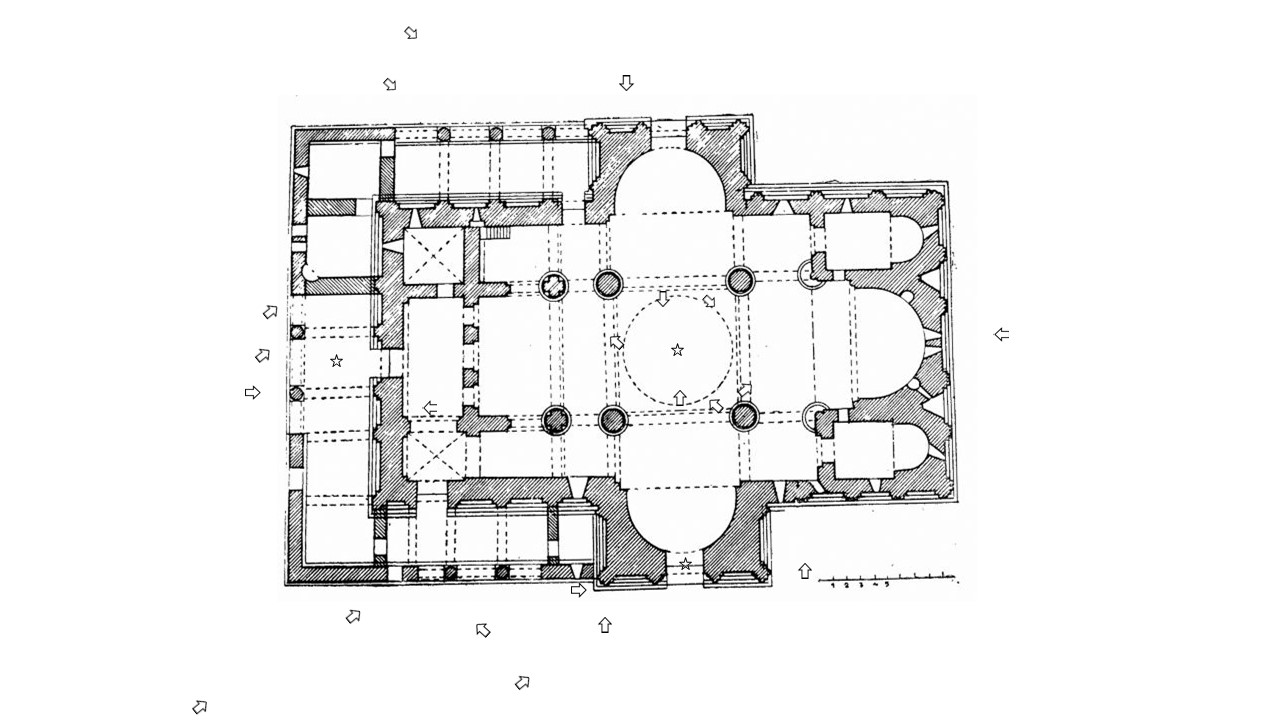Arpine Asryan
The 11thcentury cathedral of the Dormition, known more often as Bagrati (Bagrat’s) Cathedral [ბაგრატისტაძარი], is situated in the Georgian province of Imereti, in the city of Kutaisi. It is situated on the left bank of the Rioni river, not far from the king’s palace. In the 11th century Kutaisi became the capital city of the newly unified Georgian kingdom. It was the religious and cultural centre of western Georgia and part of the Eparchy of Kutaisi.
The cathedral is named after its founder, the first king of a unified Georgia, Bagrat III (978-1014), as mentioned in Kartlis Tskhovreba (The Corpus of Georgian Chronicles). Bagrat III’s father, Gurgen Bagrationi, was the ruler of Kartli and his mother Gurandukht was the daughter of the Abkhazian King George II. Bagrat was king of Abkhazia (Abkhazeti) after his uncle, from 978. Bagrat ruled Kartli together with his father and after Gurgen’s death in 1008 he ruled alone which was the beginning of the unification of Georgia.
Bagrati cathedral is cruciform in plan with four free-standing piers supporting the dome. It is a three-apsed construction to the east, with an elongated western arm. To each side of the main eastern apse, there are two-story chambers. On the second floor of both sides of the west arm, there are galleries: according to Nikifor Tolochanov and Aleksey Yevlyev, women from royal families would have prayed there. The exterior of the cathedral is decorated with blind arcading and rich geometric, vegetal and animal ornament. Some scholars are of the opinion that although the completion date of the cathedral is 1003, its decoration could date as late as 1008.
In the 1030s, richly decorated portals were added to the west and south sides of the building. On the east part of the south façade, there are two high relief human heads facing each other and on an arch corbel nearby, there is an image of a mason holding a stone block in his upraised hands. A relief of Jacob’s combat with the Angel, situated on the west wall above the omega-shaped adornment of the main window, is the only example from medieval Georgian sculpture. Archaeological excavations revealed fragments of floor mosaics which mostly present interlaced roundels with black, white, red and ochre. We can trace parallels with the marble floors of Byzantine monuments.
Bagrat III had close relations with the ruler of Tao/Tayk, David III Kurapalates, and his cathedral has close parallels with the tenth and eleventh century monuments of Tao (its floor plan, blind arcades, ornamental wall decoration, floor mosaics etc.). It can be assumed that master masons had come to Kutaisi with Bagrat III and built this cathedral.
On the cathedral walls, there are more than ten inscriptions in Asomtavruli. The foundation inscription above the central windows of the eastern façade is written with decorative letters (kidurcaisruli). It dates to 1001-1003 and mentions King Bagrat III and his mother. The stone that included the name of the master builder and the date is lost.
On the east façade there are two inscriptions: one glorifies Bagrat and was probably inscribed there when Bagrat received the Byzantine title of Kuropalates in 1001. The second inscription commemorates the completion of the laying of the floor in 1003 and is written in Arabic numerals instead of old Georgian. On the ceramic antefixes excavated in 1985-87, the inscribed name of King George I (1014-1027) was found. On another blue glazed broken down antefix the name of the bishop of Kutaisi, Antony (Sagirisdze), is mentioned who supposedly played an active role in the building process of the cathedral.
From 1555, according to the Amassian agreement between Iran and Ottoman Turkey, western Georgia became part of the Ottoman Empire with disastrous consequences for the cathedral. The cathedral was looted and bombed in 1692 and the dome, drum, and vaults were destroyed at that time. In 1740 the cathedral was used as a military storage facility. In 1770 Russian soldiers took Kutaisi and the cathedral suffered from gunfire at that time too. In 1775, Tsar Solomon I reconstructed the south porch of the cathedral and built a small church within this porch dedicated to the Virgin. In the 1930s during restoration works, the south porch was returned to its original appearance before the intervention of King Solomon.
There have been several reconstruction projects at the cathedral. In 1952, under the leadership of Vakhtang Tsintsadze, the preservation and reconstruction of the cathedral began. In 1994 under patriarch Ilia II, a fund was created for the reconstruction of the cathedral. The major conservation works were concluded in 2012. The monument has suffered badly from many layers of reconstruction and in July 2017, UNESCO excluded Bagrati Cathedral from its list of World Heritage sites due to the extent of its reconstruction.

Bibliography
- Khoshtaria, D., Bulia, M.&Janjalia, M. Kutaisi (Tbilisi, 2006).
- Аладашвили Н., МонументальнаяскульптураГрузии (Москва, 1977), 134-140.
- Павлинов А., ЭкспедициянаКавказ 1888 года, «МатериалыпоархеологииКавказа», 1893, Вып. 3, 30-45.
- Цинцадзе В., ХрамБаграта, Тбилиси (1964).


